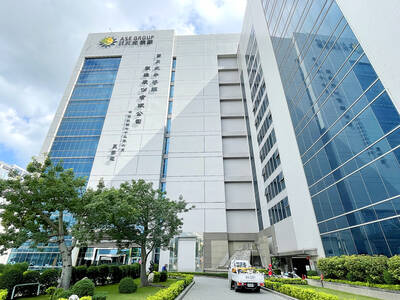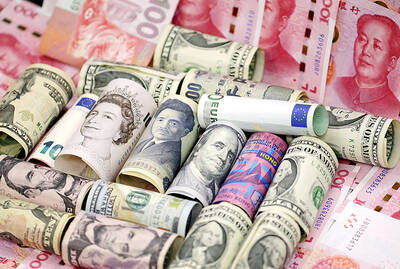The National Communications Commission (NCC) yesterday lowered interconnection fees from mobile phone networks to fixed communication networks, with the connection charge dropping by 15 percent per minute.
The policy is expected to cause Chunghwa Telecom Co (中華電信), which has a monopoly on the fixed communication market, to lose about NT$30 million (US$930,000) in revenue.
Meanwhile, the commission raised the interconnection fees from fixed communication networks to mobile phone networks by about 8 percent per minute.
NCC spokesperson Chen Jeng-chang (陳正倉) said that the new policy would not directly affect the retail price and is simply a recalculation of costs among telecom service providers.
“The commission is about to set a new price cap for retail voice communication charges by the end of this year, and the recalculation of costs may help lower the retail price,” he said.
The NCC said calls made from non-Chunghwa mobile phone networks to fixed communication networks topped 2 billion minutes per year, and fixed to mobile calls reached 1.5 billion minutes.
When a call is made from a fixed communication network to a mobile phone network, the mobile phone service providers have the right to determine the communication charge. While it costs NT$6 per minute to call from a mobile phone to a regular phone, the fixed communication service provider only receives NT$1 of the interconnection fee.
By 2011, however, the right to determine the communication charge will be turned over to the fixed network service provider.

EXPANSION: The investment came as ASE in July told investors it would accelerate capacity growth to mitigate supply issues, and would boost spending by 16 percent ASE Technology Holding Co (ASE, 日月光投控), the world’s biggest chip assembly and testing service provider, yesterday said it is investing NT$17.6 billion (US$578.6 million) to build a new advanced chip packaging facility in Kaohsiung to cope with fast-growing demand from artificial intelligence (AI), high-performance-computing (HPC) and automotive applications. The new fab, called K18B, is to commence operation in the first quarter of 2028, offering chip-on-wafer-on-substrate (CoWoS) chip packaging and final testing services, ASE said in a statement. The fab is to create 2,000 new jobs upon its completion, ASE said. A wide spectrum of system-level chip packaging technologies would be available at

Taiwan’s foreign exchange reserves hit a record high at the end of last month, surpassing the US$600 billion mark for the first time, the central bank said yesterday. Last month, the country’s foreign exchange reserves rose US$5.51 billion from a month earlier to reach US$602.94 billion due to an increase in returns from the central bank’s portfolio management, the movement of other foreign currencies in the portfolio against the US dollar and the bank’s efforts to smooth the volatility of the New Taiwan dollar. Department of Foreign Exchange Director-General Eugene Tsai (蔡炯民)said a rate cut cycle launched by the US Federal Reserve

HEAVYWEIGHT: The TAIEX ended up 382.67 points, with about 280 of those points contributed by TSMC shares alone, which rose 2.56 percent to close at NT$1,400 Shares in Taiwan broke records at the end of yesterday’s session after contract chipmaker Taiwan Semiconductor Manufacturing Co (TSMC, 台積電) hit a fresh closing-high amid enthusiasm toward artificial intelligence (AI) development, dealers said. The TAIEX ended up 382.67 points, or 1.45 percent, at the day’s high of 26,761.06. Turnover totaled NT$463.09 billion (US$15.22 billion). “The local main board has repeatedly hit new closing highs in the past few sessions as investors continued to embrace high hopes about AI applications, taking cues from a strong showing in shares of US-based AI chip designer Nvidia Corp,” Hua Nan Securities Co (華南永昌證券) analyst Kevin Su

Nvidia Corp’s major server production partner Hon Hai Precision Industry Co (鴻海精密) reported 10.99 percent year-on-year growth in quarterly sales, signaling healthy demand for artificial intelligence (AI) infrastructure. Revenue totaled NT$2.06 trillion (US$67.72 billion) in the last quarter, in line with analysts’ projections, a company statement said. On a quarterly basis, revenue was up 14.47 percent. Hon Hai’s businesses cover four primary product segments: cloud and networking, smart consumer electronics, computing, and components and other products. Last quarter, “cloud and networking products delivered strong growth, components and other products demonstrated significant growth, while smart consumer electronics and computing products slightly declined,” compared with the